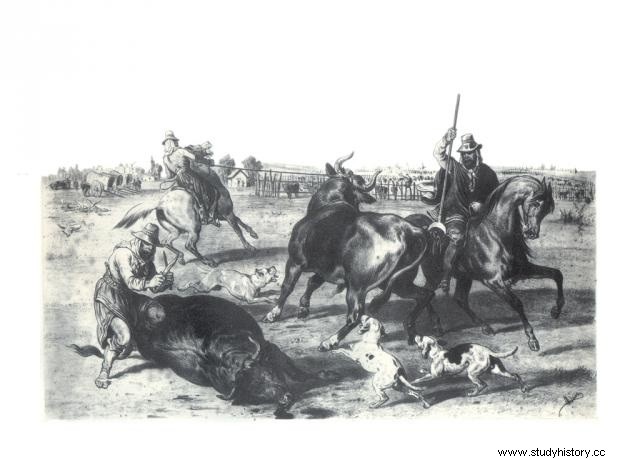Until a few years ago, the vision that showed us a rural area where the large ranchers predominated, and around these those popularly known as gauchos was still firm. , lazy or misentertained . However, for some time now, many investigations have contributed by bringing us closer to another image of the fields of the colonial Río de la Plata and their societies.
Undoubtedly, the rural area belonging to the Governorate of the Río de la Plata, until well into the 18th century, was populated mostly by small and medium-sized peasants who lived in different conditions, from salaried laborers to tenants, including other situations such as aggregation. The first were those who received a salary (mostly in "land currencies", that is, clothing, food and primary goods) in exchange for performing certain tasks in the jurisdiction's farms and ranches. The second were the peasants who did not own land and received a plot to plant or raise cattle, which belonged to an owner who benefited from the collection of rent (generally paid with agricultural and livestock products). For their part, the attaches were settlers who received the right to work on a piece of land in exchange for labor benefits that they had to pay to the rancher or farmer who owned it.

Estancia la Bamba in San Antonio de Areco (Province of Buenos Aires)
Likewise, these peasants formed a very dynamic group, since they rarely stayed permanently as peons in the establishments of their payments, but rather they used to last quite a short time settled in the same place, and it was not uncommon for the same worker were salaried, rented or aggregated during the same calendar year, or within a period of a few years. Also, many of these bums they used to be independent producers (both cattle herders and wheat farmers), who spent time as workers for others only when they needed wage income.

Colonial Gaucho
Both the colonial officials and the ranchers were characterized by persecuting these free men and their families, empowering the mayors of the Santa Hermandad (who had police and justice functions in rural areas) and the commissioned judges (for generally functioned as auxiliaries to the former). To justify their actions, the powerful groups of colonial society took it upon themselves to develop a stereotype of vagrants, vagabonds or malentertained, according to which peasants were portrayed as people who did not respect the laws or the authorities, who lived off leisure, vices and the theft of cattle from the estancias. The persecutions, trials and convictions that were carried out responded to the interests of local authorities and ranchers:to keep rural populations under control and, as much as possible, as salaried workers or dependents of productive establishments .

Peasants slaughtering cattle
Collaboration with Mauro Luis Pelozatto Reilly
Sources and references:National Academy of History (ANH), General Archive of the Nation (AGN), Raúl (2000) – The colonial rural world , FRADKIN, Raúl and GARAVAGLIA, Juan Carlos (2009). Colonial Argentina. The Río de la Plata between the 16th and 19th centuries.
